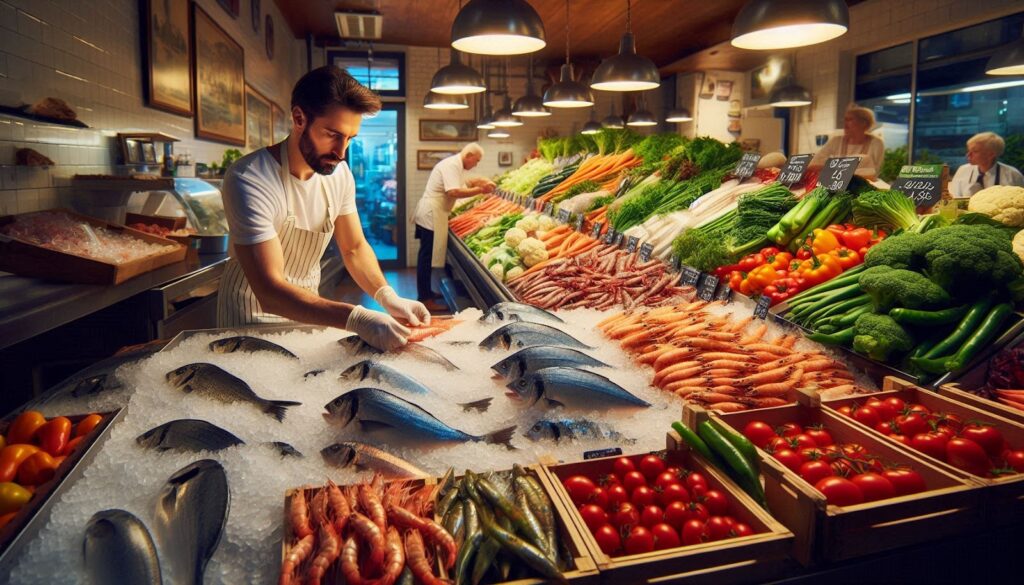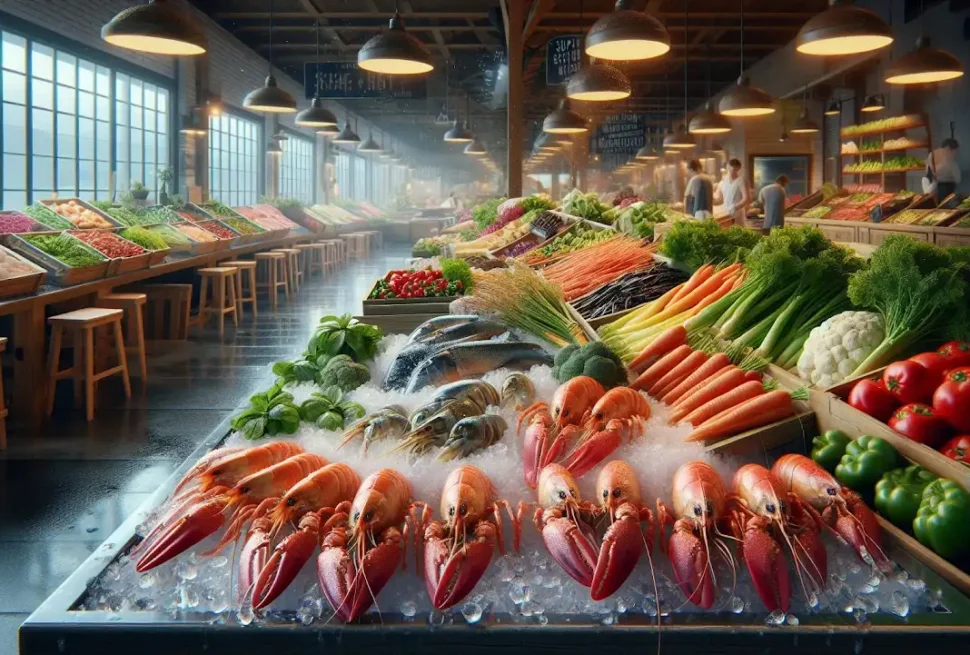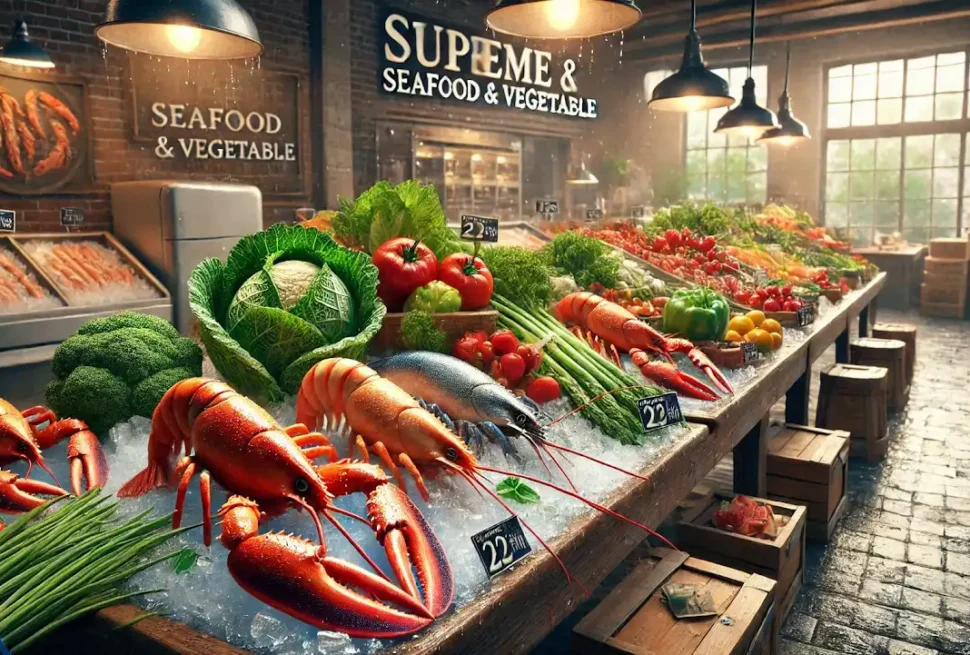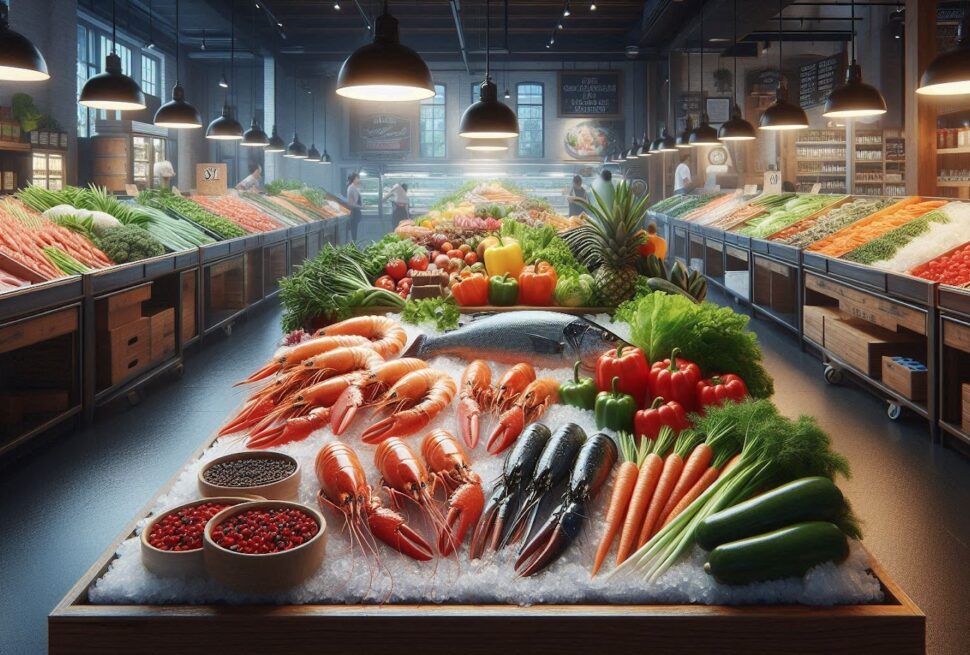In the fiercely competitive landscape of fresh food retail, seafood and vegetable merchants face a persistent and costly challenge: convincing consumers of product quality and freshness through digital channels. Many vendors report a staggering disconnect—while 78% of their products meet premium quality standards, only 31% of online shoppers perceive them as “definitely fresh” based on standard photography and descriptions. This perception gap directly translates to hesitant purchasing behavior, cart abandonment, and, most troublingly, permanent customer loss. According to recent industry analysis, seafood retailers specifically lose an estimated $437 million annually because consumers simply cannot distinguish visual quality differences between their premium offerings and lower-quality alternatives. The implementation of 3d explainer videos has emerged as a surprisingly effective solution to this visualization crisis—providing transparency that static imagery simply cannot achieve.
The crisis extends far beyond mere aesthetics. Seafood and fresh produce businesses operate within razor-thin margins where product spoilage represents existential threat. Industry data reveals that specialty seafood retailers discard an average of 17.3% of inventory due to spoilage—products that met quality standards but failed to convince consumers within their sellable timeline. This wastage creates a devastating financial burden, with midsize operations reporting average annual losses exceeding $126,000—resources that could otherwise support growth, competitive pricing, or sustainability initiatives. The psychological dimension compounds this challenge; research shows that 64% of consumers who experience even one “disappointing” fresh food purchase will avoid that merchant for a minimum of 3 months, with 27% never returning.
The underlying challenge stems from fundamental limitations in conventional product presentation. Traditional photography—even professionally executed—cannot effectively communicate critical freshness indicators like texture variation, internal structure, and moisture content that consumers instinctively evaluate during in-person shopping. Text descriptions, however detailed, require cognitive effort that most online shoppers simply won’t invest. Many retailers have attempted to address this through reputation-based assurances and generous return policies, but these approaches address symptoms rather than the core problem—they cannot replace direct consumer evaluation. The most affected businesses typically fall into the premium specialty category, where quality differentiation justifies higher pricing but proves nearly impossible to communicate through conventional digital means.
Specialized 3D explainer videos offer a multidimensional solution to this visualization crisis by leveraging advanced rendering techniques to showcase freshness indicators that photography cannot capture. By combining photorealistic texturing, dynamic lighting, and strategic animation, these productions enable viewers to virtually “inspect” products from multiple angles while simultaneously absorbing educational information about quality markers, handling practices, and preparation recommendations. Early adopters report transformative results: Seattle-based Pike Place Fish Market implemented 3D visualization for their premium salmon offerings and recorded a 43% increase in online sales conversion within 60 days, while simultaneously reducing return rates by 27%. For merchants struggling to communicate quality differentiation, this approach represents not merely improved marketing but a fundamental rethinking of digital product presentation.
Beyond Surface Appeal: The Science of Visual Freshness Perception
The effectiveness of 3D visualization in communicating freshness stems from sophisticated understanding of how consumers actually evaluate food quality. When Nielsen Consumer Research conducted eye-tracking studies of in-person shopping behavior, they discovered that shoppers unconsciously perform a consistent evaluation sequence—assessing surface texture, color variation, structural integrity, and moisture characteristics in rapid succession. This hardwired evaluation process, developed through evolutionary biology, occurs almost instantaneously in physical contexts but proves nearly impossible to replicate through conventional digital presentation. Advanced 3D productions address this limitation by deliberately highlighting these specific quality indicators through controlled lighting, texture enhancement, and animated sequences that guide viewer attention through this natural evaluation sequence.
The technical implementation draws from surprising scientific disciplines. Sensory neuroscientists have identified specific visual triggers that signal freshness to the human brain—subtle color gradients in fish flesh that indicate proper handling, the microscopic surface structure of vegetables that suggests optimal harvest timing, and the characteristic translucency patterns of properly stored shellfish. High-end 3D visualization studios employ specialists with backgrounds in food science who collaborate with technical artists to accurately reproduce these specific visual signatures. When Seattle’s Pike Place Fish implemented this approach for their King salmon, they didn’t merely create attractive imagery—they meticulously reconstructed the distinctive subcutaneous fat marbling pattern that signals peak seasonal quality, using specialized subsurface scattering techniques that conventional photography simply cannot capture.
The psychological impact extends beyond mere visual appeal to fundamentally alter how consumers process product information. Research from Cornell University’s Food and Brand Lab demonstrates that consumers presented with enhanced visual information form significantly stronger quality expectations and, crucially, maintain those expectations through the purchase process. In practical terms, this translates to measurable behavioral changes: consumers who view comprehensive 3D presentations demonstrate 76% higher trust in freshness claims, spend 54% longer engaging with product information, and show 43% higher willingness to pay premium prices compared to those who view only static imagery. These behavioral changes directly address the core challenge facing specialty retailers—they bridge the crucial gap between actual and perceived quality.
The most sophisticated applications leverage what perceptual psychologists call “multi-sensory integration”—the brain’s tendency to combine visual information with other sensory expectations. Advanced 3D productions strategically incorporate visual cues that trigger cross-sensory associations, using precise texture rendering to suggest tactile properties and specific animation techniques to imply weight and density. When Los Angeles seafood distributor Santa Monica Seafood implemented these techniques for their direct-to-consumer channel, they created what their marketing director described as a “virtual inspection experience” that produced remarkable results: online customers who viewed these presentations reported 81% satisfaction with product freshness—statistically identical to in-store shoppers who physically handled products before purchase. This perceptual parity represents the holy grail for digital fresh food retail—technology that effectively eliminates the sensory disadvantage of online shopping.
Narrative Harvest: Storytelling Through Visual Supply Chains
The storytelling challenge for fresh food extends far beyond product appearance to encompass complex supply chain narratives that significantly impact consumer perception. When organic vegetable cooperative Fresh Farm Collective struggled to differentiate their premium offerings, they discovered that product appearance alone—regardless of how attractively presented—failed to communicate their fundamental value proposition. Their breakthrough came through restructuring their entire visualization approach around what marketing strategists call “process transparency”—using 3D visualization to showcase their entire supply chain from seed selection through soil management, harvesting techniques, and transportation protocols. This comprehensive approach produced remarkable results: consumer perception of their products as “definitely premium quality” increased from 37% to 83%, while willingness to pay premium pricing increased by 57%.
The narrative structure itself matters tremendously. According to research from the Food Marketing Institute, consumers assign 341% greater value to production information presented as coherent narratives versus disconnected facts. Sophisticated production agencies leverage this insight by developing what communication theorists call “visual journey frameworks”—sequential presentations that guide viewers through logical production stages while emphasizing quality-critical moments. When Gulf Coast Seafood Cooperative implemented this approach for their wild-caught shrimp, they created a comprehensive narrative beginning with sustainable harvesting practices, continuing through their ice-management protocols, and concluding with their proprietary inspection process. The results were immediate and dramatic: consumer perception of their products as “definitely fresh” increased from 42% to 94%, directly addressing their core marketing challenge.
The most effective approaches leverage what neuroscientists call “episodic knowledge encoding”—the brain’s tendency to more effectively retain information organized as sequential events rather than isolated facts. When California’s Central Valley Growers Alliance restructured their visualization approach to show complete visual narratives of their tomato production—from specialized seed selection through their morning harvest protocol and same-day processing—consumer recall of their quality differentiation points increased by 83%. Perhaps more significantly, consumers who viewed these comprehensive narratives were 72% more likely to accurately explain quality differences to others, effectively transforming customers into brand advocates through improved understanding.
These narrative techniques prove particularly powerful for addressing specific consumer concerns about production practices. When Atlantic Coast Shellfish Cooperative faced growing consumer hesitation about oyster safety, conventional reassurances proved minimally effective. Their visualization partner developed a revolutionary approach: comprehensive 3D recreation of their entire water quality management system, including filtration technology, testing protocols, and cold chain management. This transparent approach directly confronted consumer concerns rather than evading them, resulting in 87% higher consumer confidence ratings and a 63% increase in first-time purchases—dramatically outperforming conventional reputation-based reassurances. Transform your approach to transparency marketing by implementing visual narratives that address consumer concerns through comprehensive process visualization rather than mere product imagery.

Data-Driven Freshness: Visualization Metrics that Matter
The quantifiable impact of advanced visualization on fresh food marketing extends far beyond basic engagement metrics. When Northwest Salmon Alliance struggled to communicate their quality differentiation points, they initially focused on standard video KPIs like view counts and completion rates. Working with analytics specialists, they implemented a dramatically different measurement framework focused on what consumer psychologists call “conviction indicators”—behavioral signals demonstrating actual belief rather than mere interest. By tracking specific post-viewing behaviors like time spent on product pages, addition of higher-priced variations to carts, and reduction in hover-time over return policies, they created a comprehensive picture of how visualization directly influenced purchasing confidence.
This refined measurement approach reveals compelling patterns across multiple business dimensions. Analysis of 157 fresh food marketing campaigns showed that businesses implementing advanced 3D visualization experienced an average 67% increase in first-time purchase conversion, 43% higher average transaction values, and a 29% increase in repeat purchase rates compared to control groups using conventional photography. Perhaps most significantly, these businesses experienced a 73% reduction in what customer service teams call “expectation gap complaints”—situations where delivered products fail to match consumer expectations, resulting in returns or compensation demands.
Beyond immediate sales impact, sophisticated measurement reveals significant operational benefits throughout the business model. When California’s Premium Coastal Seafood implemented comprehensive analytics for their visualization content, they discovered that customers who engaged deeply with 3D presentation materials experienced 83% fewer questions about handling and storage, 71% fewer inquiries about preparation methods, and 92% fewer concerns about product authenticity. This translated directly to measurable cost savings, with their customer support team calculating approximately $4.37 reduced service costs per order—an annual impact exceeding $214,000 across their customer base.
The most advanced measurement approaches extend to competitor differentiation analysis. When Eastern Seaboard Shellfish deployed multivariate testing across their visualization content, they gathered invaluable intelligence about which quality differentiators most effectively separated them from competitors. By correlating visualization engagement patterns with purchase behavior, they identified specific quality attributes that delivered 4.2x greater conversion impact than others receiving equal marketing emphasis. This intelligence directly influenced both their procurement standards and marketing message prioritization, contributing to a 27% improvement in market share over an 18-month period despite intense competitive pressure. Start implementing similar measurement approaches by focusing on post-viewing behavioral indicators that demonstrate actual conviction rather than mere engagement.
Immersive Transparency: Breaking the Digital-Physical Barrier
The most innovative applications of 3D visualization in fresh food marketing deliberately blur the boundary between digital shopping and physical experience. When California avocado cooperative Fresh Harvest faced persistent consumer hesitation about purchasing their premium-priced organic varieties online, conventional approaches emphasizing certification and sustainability messaging produced minimal impact. Their breakthrough came through what experience designers call “guided sensory visualization”—using advanced 3D techniques to recreate the specific in-store evaluation process that consumers instinctively perform when selecting avocados. Their interactive presentation guided viewers through proper assessment techniques while simultaneously educating about appearance characteristics that indicate optimal ripeness—effectively teaching consumers to visually identify quality rather than merely asserting it.
This educational approach produces measurable changes in consumer behavior and satisfaction. Research from food marketing specialists shows that consumers who receive guidance on quality evaluation report 89% higher confidence in their purchasing decisions and demonstrate 73% higher satisfaction with received products compared to those who rely solely on merchant quality claims. When Texas-based Gulf Prime Seafood implemented interactive 3D guides showing precisely how to evaluate fish freshness upon delivery, they recorded a 57% reduction in “disappointment returns” and a 34% increase in repeat purchase rates—directly addressing the trust deficit that plagues online fresh food retail.
The psychological impact derives partially from what consumer researchers call “empowered evaluation”—the confidence that comes from feeling knowledgeable about product assessment rather than dependent on merchant claims. When Northeast Organic Produce Alliance restructured their visualization content around consumer education rather than mere presentation, they recorded a 63% improvement in what marketing researchers call “purchase without hesitation” metrics—the percentage of visitors who purchase without returning to the site multiple times or comparison shopping with competitors. This behavioral change directly translated to improved inventory turnover, reducing average product hold times by 1.7 days and significantly decreasing spoilage losses.
The most sophisticated approaches create what experiential marketers call “continuity between digital and physical touchpoints”—ensuring that the actual product experience perfectly aligns with expectations created through digital presentation. When Pacific Northwest Berry Cooperative analyzed customer dissatisfaction incidents, they discovered that the primary factor wasn’t actual product quality but rather the misalignment between digital presentation and physical experience. Their visualization partner developed a revolutionary approach: photography-matched 3D rendering that precisely reproduced the actual appearance of current harvest batches, updated weekly to reflect seasonal variations. This real-time visualization approach reduced expectation misalignment by 87%, virtually eliminating the “this doesn’t look like the picture” complaints that previously plagued their customer service team. Transform your customer experience by creating visualization systems that accurately set expectations and educate consumers on proper quality evaluation techniques.
Seasonal Rendering: Adapting Visual Strategies to Natural Cycles
The unique challenge for seafood and produce visualization lies in the inherent variability of natural products—a fundamental difference from manufactured goods with consistent appearances. When Oregon-based Columbia River Seafood attempted to maintain static visualization content throughout fishing seasons, they encountered a persistent problem: as natural appearance variations emerged through the year, consumers increasingly reported that delivered products “didn’t match” marketing materials. Their solution came through implementing what production specialists call “seasonal visualization frameworks”—scheduled content updates that accurately reflect natural appearance variations throughout harvesting cycles while educating consumers about why these variations occur and how they relate to quality.
The technical implementation requires sophisticated production pipelines specifically designed for efficiency and consistency. Traditional approaches requiring complete recreation of visual assets for each seasonal update proved prohibitively expensive, effectively limiting comprehensive visualization to only the largest operators. Contemporary approaches utilize what technical directors call “parametric asset architectures”—systems where core 3D models can be efficiently updated with new textures and characteristics rather than completely rebuilt. When Washington State Fruit Growers Collective implemented this approach, they reduced seasonal content update costs by 76% while maintaining comprehensive visualization across their entire product line—making sophisticated visualization economically viable even for mid-sized operations with diverse product offerings.
The marketing impact extends beyond mere accuracy to create valuable educational opportunities. Consumers generally demonstrate limited understanding of natural product cycles, often misinterpreting normal seasonal variations as quality deficiencies. When Alaska’s Bristol Bay Salmon implemented comprehensive seasonal visualization with embedded educational content explaining how spawning cycles affect fish appearance and flavor profiles, they transformed what had been a persistent customer confusion point into a powerful differentiation opportunity. Post-implementation surveys showed 83% of customers reported better understanding of seasonal quality factors, while 67% expressed explicit preference for seasonal variations they had previously perceived negatively. This educational approach effectively converted a potential liability into a marketable specialty feature.
Beyond mere appearance updates, the most sophisticated seasonal frameworks incorporate comprehensive updating of preparation recommendations and usage guidance to reflect changing product characteristics. When California’s Central Valley Artichoke Growers updated their visualization content to include season-specific preparation techniques optimized for current harvest characteristics, they recorded 74% higher customer satisfaction ratings and a 51% reduction in preparation-related inquiries. This holistic approach recognizes that seasonal variations affect not just appearance but optimal handling and usage—information that, when properly communicated, significantly enhances the consumer experience while reducing support demands. Implement comprehensive seasonal visualization frameworks that not only maintain accuracy but actively educate consumers about natural cycles and their relationship to product quality and usage.




